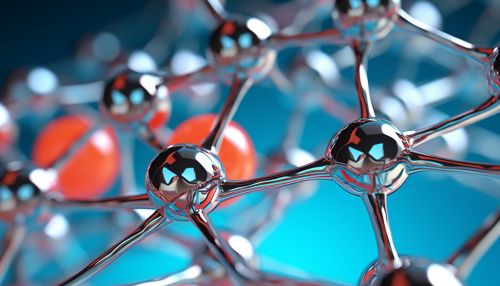Cryptochrome
Introduction
Cryptochrome is a class of flavoproteins that are sensitive to blue light. They are found in both plants and animals. Cryptochromes are involved in the circadian rhythms of plants and animals, and in the sensing of magnetic fields in a number of species. The name cryptochrome was proposed as a pun combining the Greek word "kryptos", meaning hidden, with the word chromophore, the light-absorbing part of a molecule.


Structure and Function
Cryptochromes are proteins that have a similar structure to photolyases, a class of flavoproteins that participate in DNA repair. Both cryptochromes and photolyases have a similar structure, which consists of a photolyase homology region (PHR) and a C-terminal extension. The PHR is responsible for the absorption of blue light, while the C-terminal extension is involved in signal transduction.
Cryptochromes function as blue light photoreceptors. They absorb blue light through a flavin adenine dinucleotide (FAD) molecule, which is located in the PHR. Upon absorption of light, the FAD molecule undergoes a change in its redox state, which triggers a conformational change in the cryptochrome protein. This conformational change allows the cryptochrome to interact with other proteins and to transmit the light signal.
In plants, cryptochromes are involved in a variety of light-dependent processes, including the regulation of the circadian rhythm, the control of flower development, and the regulation of stem growth. In animals, cryptochromes also play a role in the regulation of the circadian rhythm. In addition, some animals use cryptochromes for magnetoreception, the ability to sense the Earth's magnetic field.
Cryptochromes in Plants
In plants, cryptochromes are involved in the regulation of a number of light-dependent processes. These include the regulation of the circadian rhythm, the control of flower development, and the regulation of stem growth.
The regulation of the circadian rhythm by cryptochromes involves the inhibition of the activity of certain proteins that are involved in the regulation of the circadian clock. These proteins, known as clock proteins, are involved in the regulation of a number of physiological processes, including the regulation of the sleep-wake cycle, the regulation of metabolism, and the regulation of the immune response.
Cryptochromes also play a role in the control of flower development. In response to blue light, cryptochromes trigger the expression of certain genes that are involved in flower development. These genes, known as flowering time genes, control the timing of flower development and the formation of floral organs.
In addition to their role in the regulation of the circadian rhythm and the control of flower development, cryptochromes also regulate stem growth. In response to blue light, cryptochromes inhibit the activity of a class of proteins known as auxin transport proteins. These proteins are involved in the transport of auxin, a plant hormone that promotes stem growth. By inhibiting the activity of auxin transport proteins, cryptochromes prevent excessive stem growth and promote the development of a compact plant architecture.
Cryptochromes in Animals
In animals, cryptochromes are involved in the regulation of the circadian rhythm. They function as blue light photoreceptors and are involved in the entrainment of the circadian clock to the light-dark cycle.
The regulation of the circadian rhythm by cryptochromes involves the inhibition of the activity of certain proteins that are involved in the regulation of the circadian clock. These proteins, known as clock proteins, are involved in the regulation of a number of physiological processes, including the regulation of the sleep-wake cycle, the regulation of metabolism, and the regulation of the immune response.
In addition to their role in the regulation of the circadian rhythm, some animals use cryptochromes for magnetoreception, the ability to sense the Earth's magnetic field. This ability is thought to be involved in the navigation of migratory birds. The exact mechanism by which cryptochromes enable magnetoreception is not fully understood, but it is thought to involve the formation of radical pairs in response to the absorption of blue light.
Conclusion
Cryptochromes are a class of flavoproteins that function as blue light photoreceptors. They are involved in the regulation of the circadian rhythms of plants and animals, and in the sensing of magnetic fields in a number of species. The study of cryptochromes has provided insights into the mechanisms by which organisms perceive and respond to light, and has potential applications in the development of new therapies for the treatment of circadian rhythm disorders.
